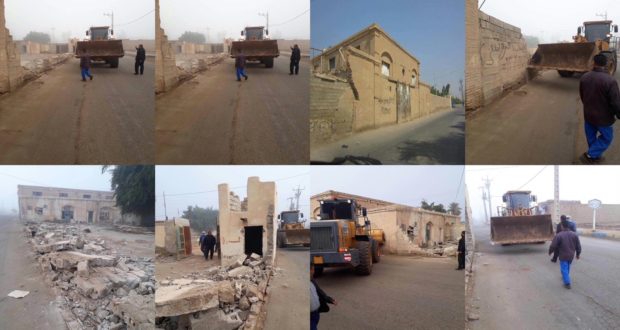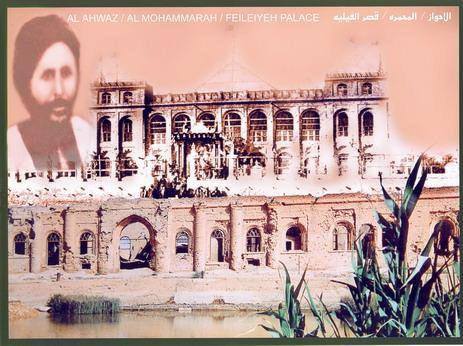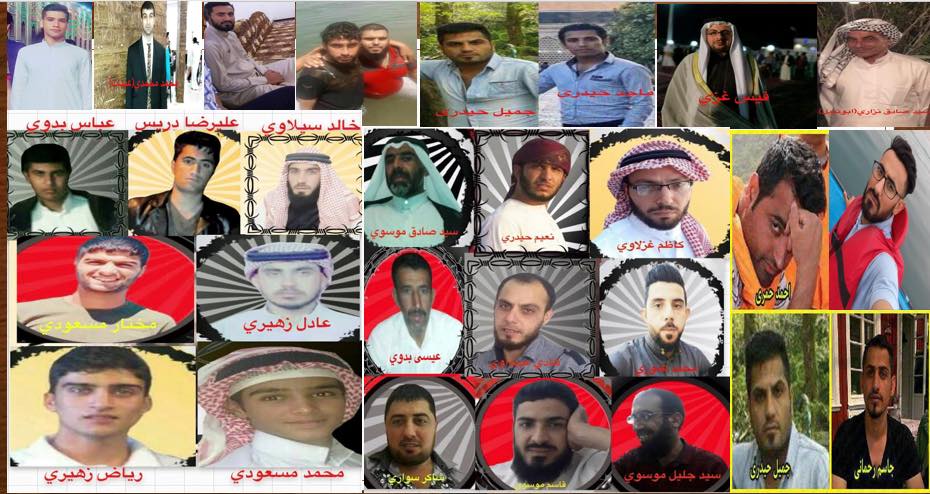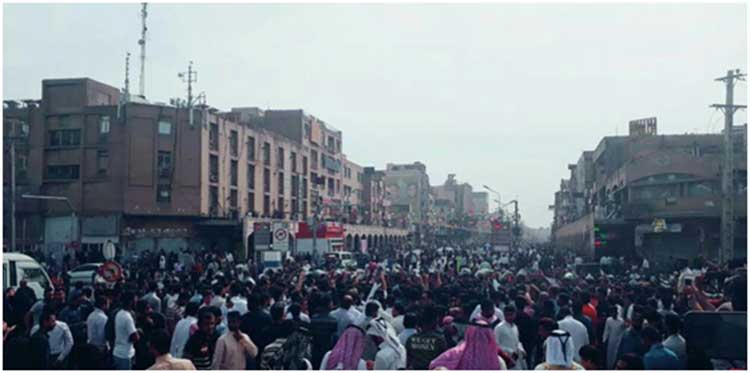
In January 2018, the Iranian regime ordered the demolition of another cherished artefact of Ahwazi heritage in the occupied Arab region of Ahwaz.
Ahwazi activists reportedthat regime authorities ignored petitions submitted by local residents pleading with them not to destroy the 98-year-old cinema in Dar Khwain city to the west of the regional capital, with regime security forces, assisted by municipality officials, using bulldozers to raze the historic building.
The cinema was established for the area’s people in 1920 on the orders of Sheikh Khazal Al-Kaabi, the last Arab ruler of Ahwaz who was deposed in Iran’s 1925 annexation of the then-autonomous Arab emirate, with even the Iranian regime’s own heritage agency listing it as a historic site to be protected.
Unfortunately, as has been the case since the 1925 annexation and occupation, which was supported by the then-British empire, successive Iranian regimes have worked tirelessly to erase the Arab cultural heritage and landmarks of the Ahwazi people; this is part of a larger effort to eradicate their Arab identity, history and heritage. The destruction of the beloved cinema was simply another expression of this attempt by Iran to forcibly assimilate the Ahwazi people, even whilst treating them as fifth-class citizens and denying them the most basic rights on the basis of their Arab ethnicity.
This official sabotage has also seen the vandalism or wholesale destruction of many other sites of historic interest in the region, with others deliberately allowed to fall into such disrepair that they collapse. These sites including the palaces of Prince Khazal’s palaces in the cities of Muhammarah, Hamidiyeh and the regional capital Ahwaz.
In November 2010, the regime’s infamous Islamic Revolutionary GuardsCorps demolished theFilya[Feiliyeh] palace overlooking the Shat al-Arab waterwaynear Muhammarah, which dated back to 1917.


Many Ahwazis believe that an unofficial battle has been going on in their region since the late 19th century to reinstate the Persian Empire there before expanding across the region.
For Ahwazi people, this is an existential fight for their culture, heritage and identity against an encroaching and accelerating ethnocide; as with other totalitarian regimes, Iran’s leadership relies on Orwellian revisionism and falsification of historical records, attempting to deny not only the distinctive ethnically Arab character of Ahwaz, but even to deny every aspect of its history; to admit the truth of its former autonomous status, after all, would force the regime to admit their own position as colonialist occupiers, whose annexation of Arabs’ lands was enabled and assisted by the then-British empire – not a good look for a regime which depicts itself as being an icon of anti-imperialist resistance.
Despite the regime’s tireless efforts to stuff Ahwazi history down the memory hole, so to speak, the history is well-documented by the Ahwazi people and can be seen in all parts of the region from Elam and Muhammarah to the Bab al-Salam and Hormuz Straits.
The regime uses every trick in the book in its efforts to claim ownership of the region and to deny the Ahwazi people their land and heritage, not only razing historic sites, but seizing homes, farms and massive tracts of land, which are ‘gifted’ to ethnically Persian settlers to the area; as in Israel these settlers are provided with well-appointed homes, generous subsidies, good jobs and other inducements to move to the region in an effort to change the demographic balance.
Iran’s efforts to erase Ahwazi culture even extend to language and clothing, with Ahwazis forbidden from receiving or providing education in their native Arabic language and prohibited from wearing their traditional Arab garb.
The Iranian regime even attempts to deny the Ahwazi people’s right to their own land, claiming that Ahwazis are not indigenous to the area but settled there during the Islamic conquest in the seventh century. Amongst many other examples of this effort to rewrite history, the regime deliberately misattributes construction of historical Ahwazi landmarks to Iran’s Akhmini dynasty rather than to the Arab rulers of the time. The aim of this wholly false manufactured narrative is to suggest that Arab Ahwazis are essentially foreign interlopers in Persians’ nation, despite the fact that this is very easily disproven by archaeological and historic records, with Ahwazis’ presence in their land dating back millennia.
The regime’s destruction of Dar Khiwan’s cinema is, therefore, simply another part of Iran’s constant efforts to erase Ahwazis’ heritage and history ancient and modern.
With more than half of Iran’s population made up of ethnic minorities, predominantly Ahwazis, Kurds, Baluchisand Turkish Azeris, the regime subjects these citizens to horrendous injustice and constant pressure in an effort to force them to renounce or simply forget their ethnic, cultural and linguistic heritage and accept Persian homogeneity; as one activist said, “The regime seizes lands, changes education curricula, and redraws borders to assert its dominance in the region.”
Ironically, the regime’s efforts to enforce the acceptance of homogenous Persian culture and identity are also fruitless because of the regime’s overt and brutal racism towards the same minorities.
Despite all of the regime’s efforts, however, Ahwazis and other minorities will continue to fight for their heritage, their rights, their culture, their history and their freedom.
Rahim Hamid is an Ahwazi Arab freelance journalist and human rights advocate who mainly writes about the plight of his people in Iran.
















































